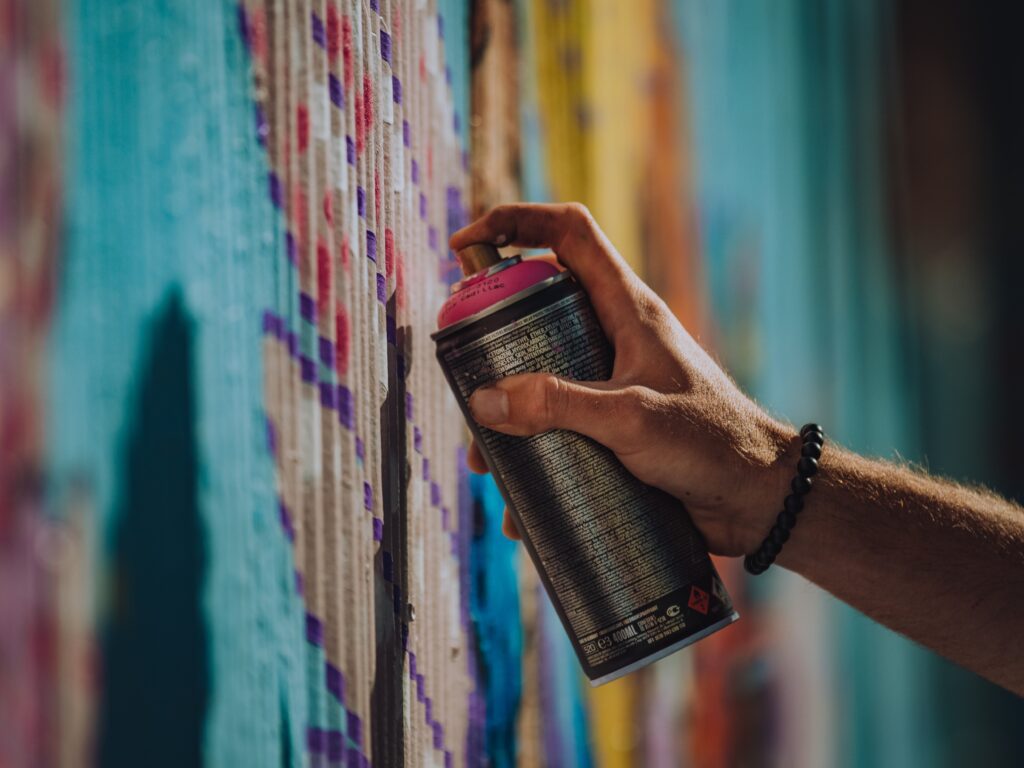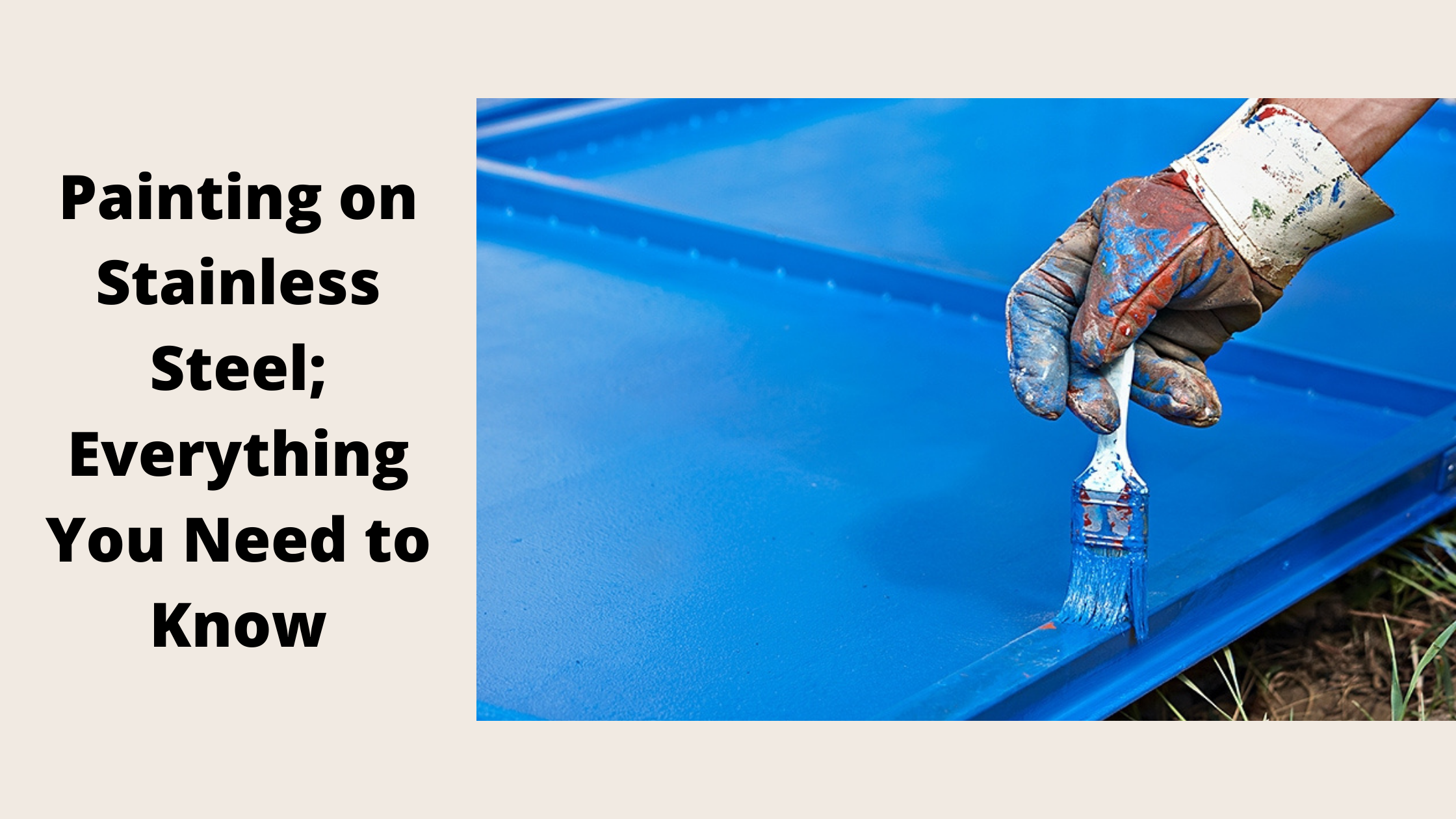Paint may adhere to a variety of surfaces. Stainless steel, on the other hand, has a cohesiveness issue since the final surface is virtually entirely smooth. If this question arises in your mind, can you paint stainless steel?
Can You Paint Stainless Steel?
You can paint stainless steel. When the steel is polished, most paint suppliers advocate sanding it down using sanding equipment or a sandblaster, but most people believe that chemically cleaning the surface is more vital.
For adherence, you usually want a very high-quality priming layer of paint. Epoxy-based primers seem to work best; however, 2- or 3-part catalyzed polyurethane may be an option.
How To Paint Over Stainless Steel?
Stainless steel, unlike wood, is nonporous, making it unsuitable for ordinary primer and paint adherence. Painters must abrade stainless steel to promote paint adherence; otherwise, the finish would crack and peel over time.
Unfortunately, because steel is so strong and resilient, friction methods cannot be employed to abrade it. Instead, a specific metal-etching primer will prepare the surface for painting.
After the correct primer is applied, any sort of paint will adhere to steel, albeit a certain sort of paint works best.
Rough Up
As a general rule, you should never apply paint directly to the finished surface of polished stainless steel, as it will never bond with the surface.
However, if you are dealing with a surface such as a countertop stainless that has countless scuff marks from years of use, you will be fine.
Otherwise, you will need to rent a sanding machine and scuff the surface of the metal so that paint has something to bond.
Cleaning and Prep
Next, make sure the roughed-up surface is absolutely clean and free of dirt, debris, and grease so that the paint can properly bind. Simple soap and water will not suffice here; a degreaser and specialist steel cleaner are mandatory.
For drying timeframes on any cleaners used, follow the manufacturer’s instructions.
Primer Coats
Before you can apply the final coat of paint in the desired color, you must first coat the stainless steel with primer. Primer coats contain unique bonding chemicals that aid in the adhesion of paint to the surface.
Any primer that is certified for use with stainless steel and your selected final paint will suffice. Most paint manufacturers offer primers meant to be used by you with your finish paint, so for the best results, stick to the manufacturer’s brand recommendations.
To create an even coat, use a spraying machine instead of a paintbrush, which can create ridges.

Again, using a paint sprayer to apply the final layer of paint on top of the priming coat after it has dried sufficiently will yield the smoothest results.
If you prefer the ridges and roughness that a paintbrush gives, you may use it to apply your final color.
If you want to experiment with different textures, you may also use a sponge or cloth.
General Tips
To minimize drips, hold the sprayer’s nozzle at least 12 to 18 inches away from the metal’s surface and employ a broad mist rather than a focused stream.
If you’re using a brush, you may be as free as you like with your strokes, depending on which way you want the “grain” of paint to dry. If you have a large enough surface, you may also use a paint roller. Roll it on just like any other surface.
How to Paint a Stainless Steel Sink?
You require something far more robust than latex enamel. Paints manufactured with epoxy or urethane are among the best options for sinks and tubs.
The fundamental distinction between stainless steel and normal steel is that stainless steel includes a tiny amount of chromium. Its goal is to oxidize and form a corrosion-resistant surface layer, but it does not affect paint adherence.
However, because chromium is extremely hard in fact, it is one of the hardest metals – a little more preparation is required.
Two-part epoxy and urethane finishes are certainly tough enough to complete a sink, but these finishes need to be sprayed, which requires the rental of spray equipment.
An excellent alternative is to utilize aerosol cans of automotive paint. If you only want to refresh the finish and enjoy the shiny look of natural stainless steel, you may use Rust-Oleum stainless steel paint.
It is available in aerosol cans as well as normal cans.
The application process determines the final finish’s look. Spraying is the way to go if you want a smooth, shiny finish. If you want a more textured look, go ahead and brush or roll with a paint roller.
You may obtain some fascinating effects by dabbing the brush or roller markings with a sponge.
Applying Paint on Stainless Steel Sink
Before painting a bare stainless steel sink, add a layer of primer. You may get stainless steel primer in an aerosol can and spray it on, or you can get it in a standard container and apply it with a brush.
A single coat is all that is required. Allow it to dry before scuffing with 220-grit wet/dry sandpaper before top coating.
Whatever paint you pick will require at least two coats. Don’t expect to attain complete coverage with just one coat. A few thin coatings are preferable to a single heavy coat, which can droop and dry unevenly. Before applying the second layer, scuff it with 320- or 400-grit sandpaper.
This gives the smoothest possible final finish, and it’s a good idea whether you’re using a brush or a roller to apply the paint.
Consider adding a single clear coat of acrylic sealer after the color applications are applied. It will preserve the color coat and give the sink a gleaming and lustrous finish.
Wait two or three days after you’ve completed painting “or longer if the paint manufacturer suggests it“ before using the sink.
Final Verdict
You can easily paint stainless steel of whatever color you like. But be careful while doing it and follow all the steps accurately to get better results.
Beatrix Ainsley (Bea to her friends) is an abstract artist who was heavily inspired in her twenties by the abstract expressionist movement of the 1940s. Since then Bea has acquired three degrees in Science, Education and most importantly Fine Art. Her art works showcase exploring emotion and introspection of self. To achieve this – the use of bold, sweeping, intricate layers of color, and spontaneity of form is enhanced by reflecting on decades of life experiences. Bea has amassed a vast knowledge of art in all its forms, and hopes to pass it on with her contributions here.



so educative I really enjoyed the context.